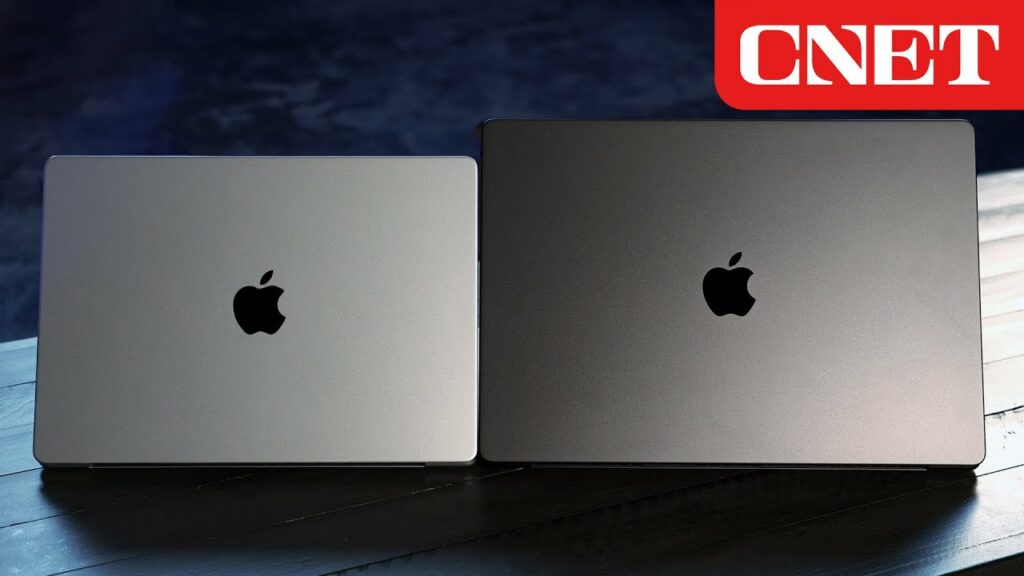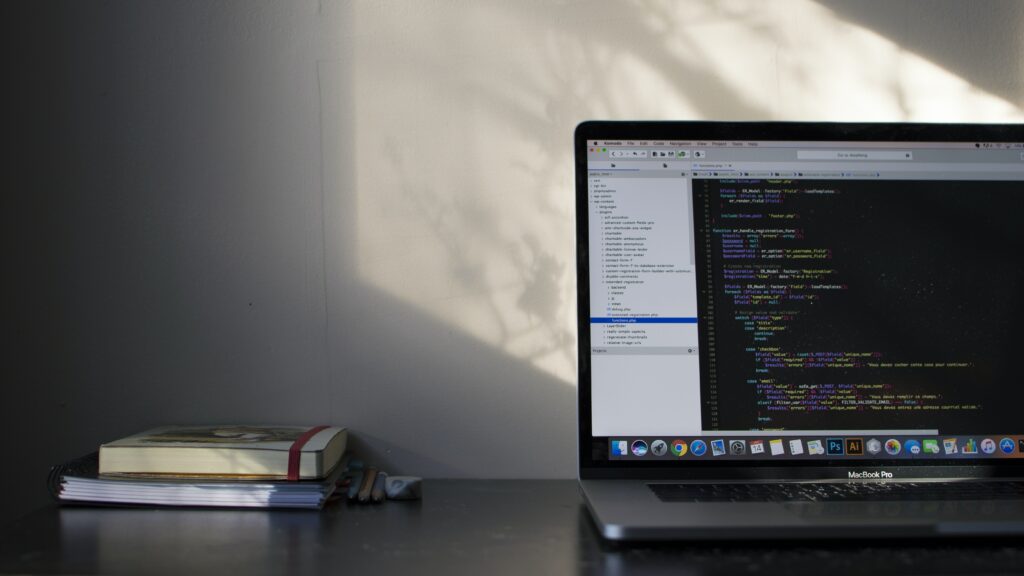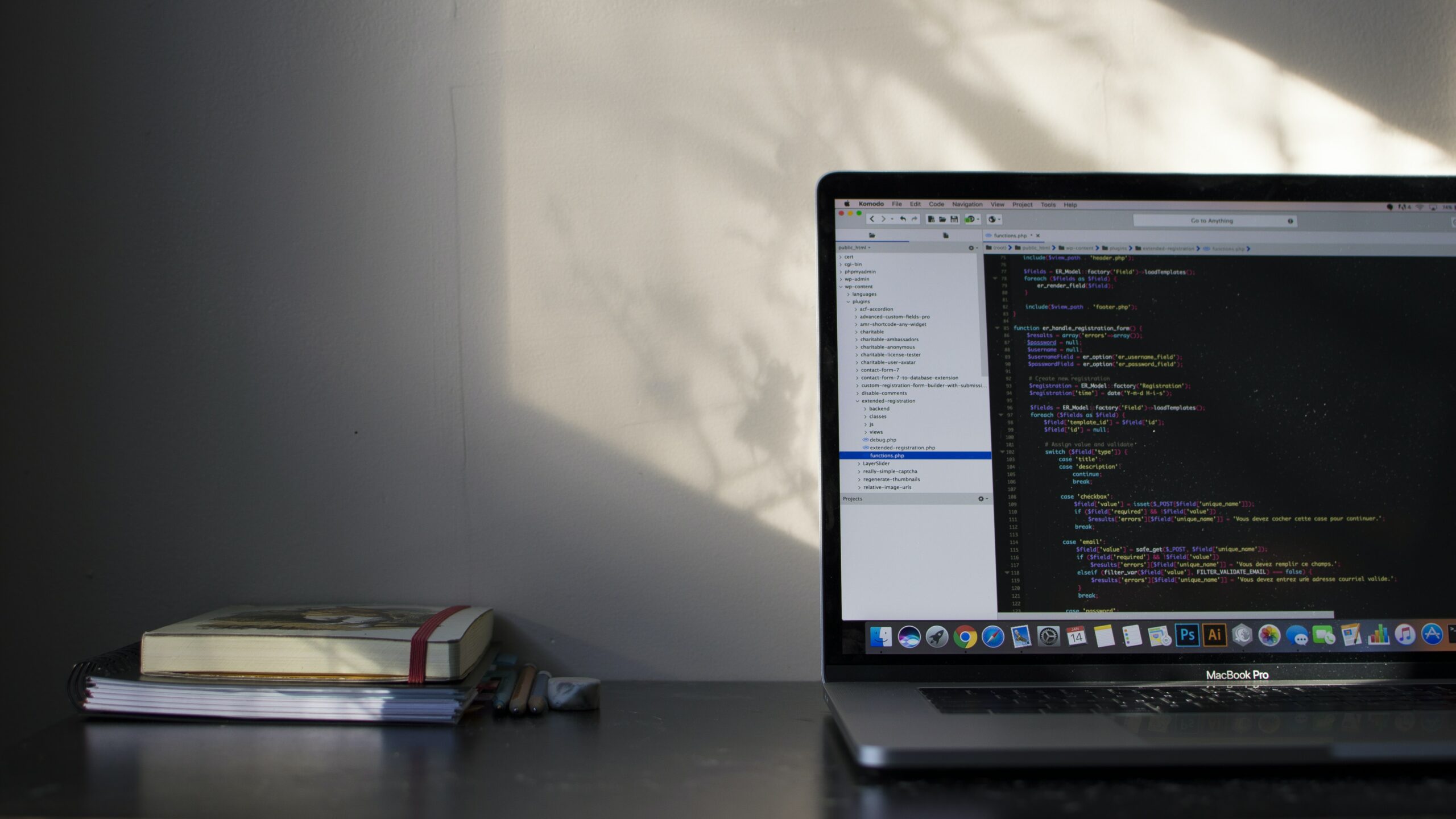The article titled “Apple MacBook Pro 16 and 14-inch M3 Series Review” provides an overview of the new M3 series versions of the MacBook Pro 14 and 16-inch models. It highlights that these models have been released within a short time frame since the M2 series model of the MacBook Pro 16. The article discusses the similarities and differences between the new M3 series versions and their predecessors, focusing on aspects such as design, display quality, performance, and pricing. It provides insights into the strengths and weaknesses of these new MacBook Pro models, highlighting factors such as smudges on the keyboard, limited ports, and the presence of a notch on the display. The article concludes by presenting the writer’s preference for the larger screen of the MacBook Pro 16 and its fast performance, while also acknowledging the appeal of the smaller MacBook Pro 14 for its improved graphics performance and battery life. Overall, this review aims to inform readers about the features and capabilities of the new Apple MacBook Pro 16 and 14-inch M3 Series.
Design and Appearance
New dark gray color
The new MacBook Pro 14 and MacBook Pro 16 come in an elegant semi-glossy dark gray color known as space black. It is darker than the space gray color of the previous M2 series models. Apple promotes the space black version as being fingerprint resistant, particularly on the top surface. While there may be some smudges on the laptop, they are not easily visible unless one makes an effort to look for them. Users have observed that the keyboard and keyboard deck are more prone to smudges, mainly due to frequent touch. However, this issue is not a major concern and can be managed with regular cleaning. Overall, the dark gray color adds a sophisticated and sleek aesthetic to the MacBook Pro lineup.
Space black option
The introduction of the space black color option for the MacBook Pro 14 and MacBook Pro 16 offers users a choice beyond the traditional space gray. The darker shade adds a touch of elegance and uniqueness to the design, setting it apart from previous models and appealing to users looking for a more premium aesthetic. The space black option is particularly popular due to its sleek and modern appearance. It complements the overall design of the MacBook Pro, giving it a refined and sophisticated look.
Fingerprint resistance
The space black version of the MacBook Pro 14 and MacBook Pro 16 is touted as being fingerprint resistant, especially on the top surface. This feature is particularly beneficial for users who prefer a clean and smudge-free laptop appearance. While there may still be some smudges present on the keyboard and keyboard deck, the top surface of the MacBook Pro remains relatively free from fingerprints. The fingerprint resistance feature adds to the overall appeal of the dark gray color option, making it an attractive choice for users who value cleanliness and aesthetics.
Smudge visibility
Although the dark gray color of the MacBook Pro 14 and MacBook Pro 16 is generally resistant to fingerprints, the keyboard and keyboard deck are more susceptible to smudges. Due to regular touch and use, the keys and surrounding areas may show signs of wear and oils. However, this issue is not unique to the new M3 series models and has been observed in previous MacBook Pro iterations as well. It is worth noting that the smudges become more apparent on the silver version of the laptop compared to the space black option. While this may be a minor concern for some users, it can be managed with regular cleaning and maintenance.
Changes in MacBook Pro 14
Introduction of M3 model
The most significant change in the MacBook Pro 14 lineup is the introduction of the M3 model. This new addition provides users with a lower-priced option compared to the M3 Pro and M3 Max models. By including a low-end option, Apple aims to cater to volume buyers and budget-conscious consumers who still want the performance and features of a MacBook Pro. Although the M3 model is a more affordable choice, it does come with some trade-offs in terms of physical design and specifications compared to its higher-end counterparts.
Lower price point
The introduction of the M3 model in the MacBook Pro 14 lineup allows for a lower price point, making it more accessible to a wider range of consumers. With a starting price of $1,600, the M3 model provides an attractive option for users who desire the MacBook Pro experience but have budget constraints. This lower price point makes the MacBook Pro 14 a compelling choice for those who prioritize performance, reliability, and the macOS ecosystem without having to invest in the higher-priced models.
Stripped-down features compared to M3 Pro and M3 Max
While the M3 model offers affordability, it should be noted that it comes with stripped-down features compared to the M3 Pro and M3 Max models. These limitations are imposed by the chip and motherboard layout. One notable difference is the presence of only two Thunderbolt connections, both located on the left side of the laptop. Additionally, the M3 model features a single MagSafe connector, providing charging options exclusively on the left side. Moreover, the M3 model can only support a single external monitor, limiting its connectivity options when using multiple displays. These design and feature limitations are an inherent compromise for users opting for the lower-priced M3 model.

Connectivity options
Two Thunderbolt connections
Both the MacBook Pro 14 and MacBook Pro 16 come equipped with two Thunderbolt connections. These Thunderbolt connections allow for high-speed data transfer and connection to external devices such as displays, storage devices, and docks. The inclusion of multiple Thunderbolt connections provides flexibility and convenience for users, enabling them to connect a variety of peripherals simultaneously. Having two Thunderbolt connections opens up possibilities for increased productivity and expanded workflows, particularly for professionals who rely on multiple external devices.
Left side placement
In terms of placement, both Thunderbolt connections are located on the left side of the MacBook Pro, along with the MagSafe connector. This placement ensures that all charging options are conveniently situated on one side. While having all the charging options on the left side may be a minor inconvenience for users who prefer a different positioning, it does provide a level of consistency and organization. However, it is worth noting that some users may have a preference for a more balanced placement of Thunderbolt connections on both sides for enhanced symmetry and flexibility.
Single external monitor support
The MacBook Pro 14 and MacBook Pro 16 are designed to support a single external monitor in addition to the built-in display. This configuration allows users to extend their workspace or mirror their screens for presentations and collaborations. While the ability to connect only one external monitor may limit the flexibility for users who require multiple displays, it is important to consider the overall portability and form factor of the MacBook Pro. For most users, the capability to connect a single high-resolution external monitor is sufficient for their productivity and creative needs.
MagSafe connector
Both the MacBook Pro 14 and MacBook Pro 16 feature a MagSafe connector, offering a convenient and secure method of charging the laptops. The MagSafe connector utilizes magnets to ensure a reliable and stable connection between the charger and the laptop. This design feature has been well-received by users, as it prevents accidental disconnections and reduces the risk of damaging the charging port. The MagSafe connector also enables a quick and effortless snap-on connection, enhancing the overall user experience and convenience.
Display enhancements
Liquid Retina XDR panels
The MacBook Pro 14 and MacBook Pro 16 feature the same bright liquid Retina XDR panels found in the previous models. These high-quality display panels provide users with exceptional visual clarity, accurate colors, and stunning image details. The liquid Retina XDR panels offer vivid and lifelike visuals, making them suitable for a wide range of professional tasks, including graphic design, video editing, and content creation. The inclusion of these advanced display panels ensures an immersive and visually appealing experience for users.
Increased brightness
One noticeable enhancement in the display of the MacBook Pro 14 and MacBook Pro 16 is the increased brightness compared to previous models. The maximum brightness has been improved from 500 nits to 600 nits, allowing for better visibility in bright light conditions or outdoor environments. This increase in brightness enhances the overall usability and versatility of the laptops, ensuring that users can comfortably work on their projects without straining their eyes. The improved brightness level contributes to a more enjoyable and productive user experience.
Notch presence
It is important to note that both the MacBook Pro 14 and MacBook Pro 16 retain the presence of a notch on the display. While the notch may divide opinions among users, it is primarily a design choice made by Apple. Some users may find the notch to be a minor distraction, particularly when viewing content that extends to the top edges of the display. However, others may not find it bothersome, especially when using a solid black background or when the notch is not actively noticeable during day-to-day usage. Ultimately, the presence of the notch should be considered based on individual preferences and usage scenarios.

Chip performance
16-core M3 Max chip
One of the significant upgrades in the MacBook Pro 16 is the inclusion of the 16-core M3 Max chip. This chip offers exceptional performance capabilities, particularly in resource-intensive tasks such as video editing, 3D rendering, and software development. The 16-core architecture ensures that the laptop can handle demanding workflows and complex computations efficiently. With the M3 Max chip, Apple has focused on maximizing performance and power, catering to professionals and power users who require the utmost processing capabilities from their laptops.
Performance-focused configuration
The 16-core M3 Max chip configuration in the MacBook Pro 16 is optimized for performance-oriented tasks. Apple has shifted away from a balanced approach between performance and efficiency cores and has prioritized performance in this chip model. By focusing on providing more performance cores, the M3 Max chip offers a significant boost in processing power, allowing for faster task completion and improved overall performance. Users can benefit from enhanced speed and responsiveness, enabling them to tackle demanding projects with ease.
Improved speed and power
With the inclusion of the M3 Max chip, the MacBook Pro 16 demonstrates improved speed and power compared to previous models. The upgraded chip configuration facilitates faster data processing and execution of tasks, resulting in reduced latency and improved overall performance. The increased speed and power translate to smoother performance, seamless multitasking, and shorter rendering times, ultimately enhancing the user experience. Users who rely on resource-intensive applications will particularly appreciate the improved speed and power capabilities offered by the M3 Max chip.
Battery life considerations
While the M3 Max chip offers exceptional performance, it is important to consider the impact on battery life. The increased power and processing capabilities of the chip may lead to more demanding power consumption. Users should be mindful of their usage patterns and battery requirements, as resource-intensive tasks can quickly drain the battery. It is advisable to balance performance with energy efficiency, utilizing the high-power setting when necessary but considering battery life when operating on battery power alone. Overall, the battery life of the MacBook Pro 16 remains impressive for its class, offering a good balance between performance and longevity.
M3 Pro in MacBook Pro 14
Similar CPU cores as M2 Pro
The M3 Pro chip in the MacBook Pro 14 features a similar number of CPU cores as the previous M2 Pro chip. However, there have been changes in the balance between these cores in the M3 Pro configuration. The shift in core configuration ensures a more even distribution and allocation of processing power. This modification contributes to improved efficiency and performance in the MacBook Pro 14, allowing users to accomplish tasks more effectively.
Balanced core configuration
The M3 Pro chip in the MacBook Pro 14 offers a balanced core configuration, providing a more even distribution of processing power. This balanced approach between different CPU cores results in enhanced overall performance and smoother multitasking capabilities. Users can expect a seamless experience when running multiple applications concurrently or engaging in intensive workflows. The balanced core configuration ensures that each core is optimized for specific tasks, striking a harmony between performance gains and efficiency.
Lower memory bandwidth and GPU core
When comparing the M3 Pro chip to the previous top M2 Pro chip, there are some variances in memory bandwidth and GPU core allocation. The M3 Pro chip features lower memory bandwidth and one less GPU core. Despite these differences, users can still expect to see performance gains and improved efficiency, owing to advancements in the chip’s fabrication process and updates to graphics algorithms. The M3 Pro chip’s lower memory bandwidth and GPU core allocation should not significantly impact the overall user experience, as the MacBook Pro 14 maintains its ability to handle demanding tasks efficiently.
Performance gains and improved efficiency
Although the M3 Pro chip may not offer as extensive performance gains as some may expect when compared to the previous top M2 Pro chip, users can still experience noticeable improvements in performance. The balanced core configuration and optimizations in the M3 Pro chip result in enhanced efficiency and more effective task execution. Users can benefit from faster processing speeds, reduced latency, and improved responsiveness when working on their projects. While the M3 Pro chip may not deliver the same level of performance as the M3 Max chip, it strikes a good balance between power and efficiency for users seeking a moderately-priced option.

Size and weight comparison
Preference for 14-inch model
Many users appreciate the size and weight of the MacBook Pro 14, making it their preferred choice between the two models. The 14-inch display offers a spacious yet portable solution, striking a good balance between screen real estate and overall portability. The compact form factor makes it easier to carry the MacBook Pro 14 and fits comfortably into bags or backpacks. Users who prioritize mobility and prefer a more compact laptop will find the 14-inch model a suitable option for their needs.
Consideration of larger screen in 16-inch model
While the MacBook Pro 14 is favored for its size, there are users who may benefit from the larger screen of the 16-inch model. The 16-inch display provides more room for creative tasks, such as photo and video editing, graphic design, and coding. The additional screen real estate allows for improved workspace organization and enhances multitasking capabilities. Users who require a larger canvas to fully utilize professional applications or those who value a larger display for entertainment purposes may find the 16-inch model more suitable for their requirements.
Price variations between both models
Price variations exist between the MacBook Pro 14 and MacBook Pro 16, with the latter generally being more expensive. The starting price for the MacBook Pro 16 is $4,000, while the MacBook Pro 14 has a more appealing starting price of $2,500. It is important for users to consider their budgetary constraints and prioritize their specific requirements when choosing between the two models. While the MacBook Pro 16 offers a larger screen and potential performance advantages with the M3 Max chip, the MacBook Pro 14 strikes a balance between cost, performance, and portability, making it an attractive option for many users.
Positive aspects
Fast performance
Both the MacBook Pro 14 and MacBook Pro 16 excel in terms of performance, offering users fast and responsive experiences. The inclusion of powerful M3 series chips ensures smooth multitasking and efficient execution of various tasks, ranging from everyday productivity to resource-intensive applications. Users can expect quicker rendering times, seamless software operation, and overall snappy performance from these laptops. The fast performance of the MacBook Pro series allows professionals and power users to tackle complex projects with ease, increasing productivity and efficiency.
Dark gray color
The introduction of the dark gray color, particularly the space black option, has been well-received by users. The dark and elegant aesthetic adds a touch of sophistication to the MacBook Pro 14 and MacBook Pro 16. The space black color option, in particular, offers a unique and premium appearance, enhancing the overall visual appeal of the laptops. Users who value sleek and modern design elements find the dark gray color options a significant positive aspect of the MacBook Pro series.
Reasonable pricing
The M3 series models of the MacBook Pro 14 and MacBook Pro 16 come with a relatively reasonable price tag. The availability of a lower-priced option in the form of the M3 model allows budget-conscious consumers to experience the benefits of a MacBook Pro without breaking the bank. This reasonable pricing strategy makes the MacBook Pro series more accessible to a wider range of users, including students, creative professionals, and individuals who require a reliable and powerful laptop within a specific budget.
Low noise levels
The MacBook Pro 14 and MacBook Pro 16 boast low noise levels, even when running demanding applications or executing resource-intensive tasks. The efficient cooling system and optimized fan management ensure that the laptops remain quiet during operation. This low noise level is particularly advantageous for professionals who require a peaceful and distraction-free work environment. Users can focus on their projects without the annoyance of excessive fan noise, contributing to an overall pleasant and conducive work experience.
Good battery life
Both the MacBook Pro 14 and MacBook Pro 16 offer good battery life, allowing users to remain productive throughout the day without constantly needing to be near a power source. The laptops’ power-efficient components and optimized software ensure that battery life is maximized to provide extended usage time. While power-intensive tasks may reduce battery life, the MacBook Pro series still performs admirably in terms of longevity. The good battery life enables users to work on their projects, stream media, or engage in other activities without constantly worrying about running out of charge.

Negative aspects
Key caps showing wear
One negative aspect associated with the MacBook Pro 14 and MacBook Pro 16 is the potential for key caps to show wear over time. Due to frequent use and contact with the oils from fingers, certain keys may become shiny and show signs of wear more prominently. While this issue may not affect the laptop’s functionality, it can be aesthetically displeasing for some users, particularly those who prioritize a pristine appearance. Regular cleaning and maintenance can alleviate this issue to some extent, ensuring that the key caps remain in better condition for a longer period.
Weight
The weight of both the MacBook Pro 14 and MacBook Pro 16 may pose a slight inconvenience for users who prioritize portability. While the laptops are well-built and offer premium features, their weight may not be ideal for those constantly on the move or who require a lightweight solution. The MacBook Pro 16 is especially heavier compared to the MacBook Pro 14, which may deter users looking for a more lightweight laptop. However, it is important to consider the trade-off between weight and performance when selecting a MacBook Pro model.
Presence of display notch
The presence of a display notch on both the MacBook Pro 14 and MacBook Pro 16 has been a point of contention for some users. The notch, while utilized for various purposes such as housing the webcam and other sensors, may distract certain individuals, particularly when viewing content that extends to the top edges of the display. However, for users who use a solid black background or do not actively notice the notch during day-to-day usage, this aspect may not be a significant concern. Ultimately, the presence of the display notch should be weighed against individual preferences and its impact on the overall user experience.
Conclusion
Overall, the MacBook Pro 16 and MacBook Pro 14 offer exceptional performance, design, and features that cater to a wide range of users. The introduction of the M3 series models brings notable upgrades and enhancements to the MacBook Pro lineup, ensuring that users have access to the latest technology and capabilities. The space black color option, along with its fingerprint resistance, adds a touch of elegance and sophistication to the laptops. Additionally, the MacBook Pro 14’s introduction of the M3 model offers users a more affordable option without compromising on essential features. Both models come with various connectivity options, ensuring flexibility and convenience for users. The display enhancements, including the liquid Retina XDR panels and increased brightness, provide visually stunning experiences. The performance-driven M3 Max chip in the MacBook Pro 16 offers incredible speed and power, while the M3 Pro chip in the MacBook Pro 14 delivers a good balance between performance gains and efficiency. Users may prefer the 14-inch model for its size and weight, while others may opt for the larger screen of the 16-inch model. The positive aspects of fast performance, dark gray color options, reasonable pricing, low noise levels, and good battery life contribute to the overall satisfaction with the MacBook Pro series. However, considerations should be made for potential negatives such as key caps showing wear, weight, and the presence of the display notch. Ultimately, users have the freedom to select the MacBook Pro model that best suits their specific needs and preferences, whether it be for size, performance, or affordability.










